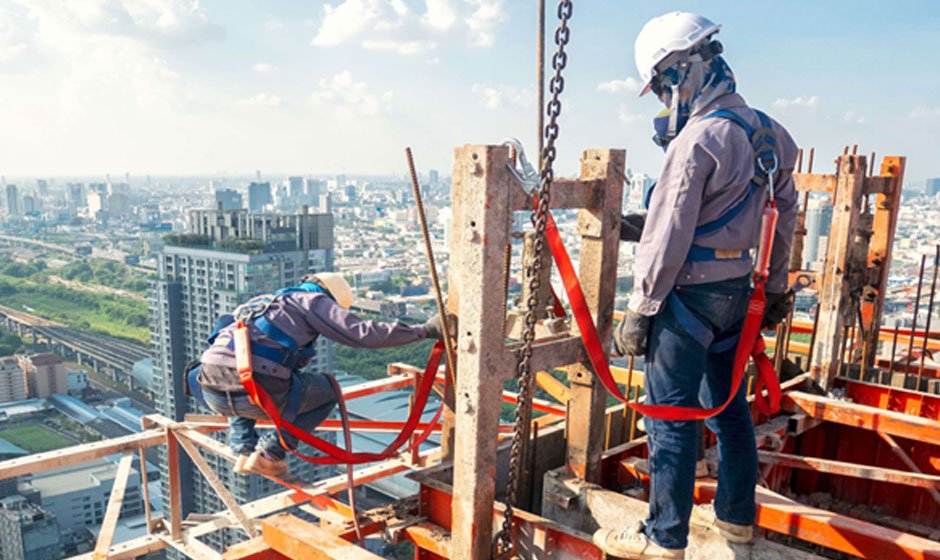Working at heights is a common aspect of many industries, but it comes with its risks also. Accidents and injuries can transpire if workers aren’t adequately trained to handle tasks at elevated levels. Working at heights encompasses manifold tasks, from construction work on tall buildings to everyday jobs like installing rooftop equipment. The risks involved in such work are undeniable. However, with proper training and awareness, these risks can be bypassed. After going through this, you will explore the benefits of completing working at heights training. By the end, you’ll comprehend why this training is essential for both employees and employers.
Edges of completing working in heights
Here are some advantages of completing working in heights training:
● Enhanced safety
The most important benefit of completing a working at heights training program is enhanced safety. Workers who have undergone proper training are more conscious of the possible risks linked with working at heights and are better equipped to recognize and overcome them. They learn how to evaluate the safety of their work environment, select appropriate personal protective equipment, and make informed decisions about when to operate safety harnesses, guardrails, or other fall protection systems. This safety awareness diminishes the likelihood of accidents and injuries.
● Compliance with regulation
In many countries, there are strict regulations and standards to manage working at heights activities. These regulations are devised to protect workers and secure workplace safety. Completing a working at heights training program helps workers and employers stay in compliance with these regulations. It confirms that workers are trained to fulfill the legal requirements for safe work practices at heights, which can aid organizations in avoiding fines, penalties, and legal issues.
● Reduced accidents and injuries
Accidents and injuries that transpire due to falls from heights are often severe and can have long-lasting consequences. Completing working at heights training decreases the risk of such incidents. Workers are guided on how to operate safety equipment, conduct risk assessments, and execute tasks more safely, which minimizes the likelihood of accidents. This training helps to sidestep workplace injuries, reduce medical expenses, and lower workers’ compensation claims, which can save businesses precious time and money.
● Increased productivity
Safe workers are productive workers. Completing working at heights training authorizes workers to perform their tasks more efficiently and confidently, knowing that they are furnished with the knowledge and skills to do so safely. When workers are confident in their safety, they can concentrate on their jobs, ushering in increased productivity and better results. This boost in productivity can positively impact a company’s bottom line.
● Skill development
Working at heights training goes beyond just safety awareness, it also proposes the opportunity for skill development. Workers discover how to use multifarious equipment, such as harnesses, lanyards, and anchors properly. This practical knowledge is not only compulsory for safety but can also be applied to different aspects of their work, making them more versatile and skilled employees.
● Enhances business reputation
A strong commitment to workplace safety and a track record of trained workers can sweeten an organization’s reputation. Clients, partners, and stakeholders often like to work with companies that prioritize safety. In industries where working at heights is common, having a reputation for safety can be a competitive advantage. It can usher in more contracts, partnerships, and business opportunities.
● Cost saving
Investing in working at heights training may mandate an initial financial cost, but it can usher in substantial cost savings in the long run. By diminishing accidents, injuries, and their associated costs, organizations can save money on medical expenses, workers’ compensation claims, and legal fees. Furthermore, lower downtime due to falls or slips and boosted productivity can also contribute to cost savings.
● Environmental consideration
Working at heights training not only proposes personal and financial benefits, but it can also contribute to environmental protection. Proper training assures that workers handle equipment and materials responsibly and take measures to eliminate accidents that could usher to environmental contamination. This is particularly important in industries where hazardous materials or chemicals are present at elevated levels.
● Peace of mind
For workers, the peace of mind that comes from knowing they are adequately prepared for the challenges of working at heights is incalculable. It eases anxiety and stress linked with the job and lets them focus on their tasks with confidence. This sense of security is priceless for maintaining mental well-being.
To end, completing working at heights training is compulsory for both employees and employers. It improves safety, productivity, and confidence, while also assuring compliance with regulations and industry standards. This training furnishes people with life-saving skills and can open up new career opportunities. So, if you want to learn these skills, search for working at heights training services today!

